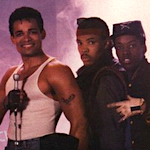 May 10, 1985
May 10, 1985
As I might’ve told you before, I’ve got a soft spot for the hip hop movies of the ‘80s. None are exactly great films, and most are made by people who could’ve just as easily been doing one about BMX or video game competitions or something. WILD STYLE is one of the few that could be argued to genuinely come out of the hip hop culture, and I never saw that until I was older. But BREAKIN’, BREAKIN’ 2 and the more legit BEAT STREET (all released in 1984) were formative for me, softening me up for Raising Hell and Licensed to Ill to come along and change my life.
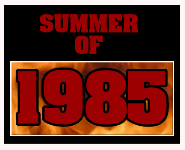 For me, enough time has passed to forgive any lacking in authenticity and enjoy these movies as time capsules of a time when exploitation filmmakers valiantly tried to straddle the zeitgeist, grab the horns of a movement they didn’t understand, and somehow wrestle it to the ground.
For me, enough time has passed to forgive any lacking in authenticity and enjoy these movies as time capsules of a time when exploitation filmmakers valiantly tried to straddle the zeitgeist, grab the horns of a movement they didn’t understand, and somehow wrestle it to the ground.
I must’ve known the word “rap” in ’85 – as in “a rap,” because everyone knew about “The Super Bowl Shuffle,” and I was obsessed with the Grandmaster Melle Mel song “Vice” from the Miami Vice soundtrack. But I also called it “breakdancing music.” I was learning. It might be for the best that I didn’t learn from RAPPIN’, a movie I didn’t know about back then even though it was from the same studio and director as BREAKIN’, and supposedly released as BREAKDANCE 3: ELECTRIC BOOGALEE somewhere, though I haven’t been able to find any advertising art to support that claim.
A crazy thing about these three movies is that they played a part in spreading New York’s culture of hip hop across the world, but none of them take place in New York. The BREAKIN’s are in L.A. and RAPPIN’, strangely, is in Pittsburgh. The Wikipedia page for Category:Rappers from Pittsburgh has only eight entries, of which only four were even born when this movie came out. And one of those is Turbo B from Snap!. I don’t want to disparage a scene I know nothing about – Wiz Khalifa and Mac Miller are two well known MCs who have since come out of there – but I suspect Cannon could film cheaper here than New York and figured as long as there were dilapidated buildings nobody would care that there were no subway cars.
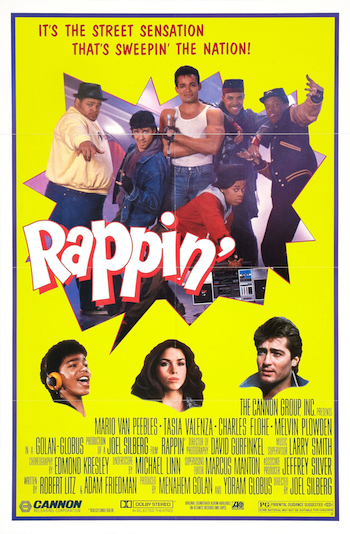 On the other hand, the movie has a direct lineage to independent African-American cinema via its star, Mario Van Peebles, whose film debut was in the uncomfortable opening scene of his father’s SWEET SWEETBACK’S BAADASSSSS SONG (1971). His largest role to this point had been as the villain in EXTERMINATOR 2 (1984), and he’d been the Jamaican-accented villain Spider in the breakdancing movie DELIVERY BOYS, just released that April. This was his first lead role.
On the other hand, the movie has a direct lineage to independent African-American cinema via its star, Mario Van Peebles, whose film debut was in the uncomfortable opening scene of his father’s SWEET SWEETBACK’S BAADASSSSS SONG (1971). His largest role to this point had been as the villain in EXTERMINATOR 2 (1984), and he’d been the Jamaican-accented villain Spider in the breakdancing movie DELIVERY BOYS, just released that April. This was his first lead role.
Van Peebles plays John “Rappin’” Hood or, as Lovebug Starski puts it in the theme song, “I said Rappin’ Hood, Rappin’ Hood, Rap Rap Rappin’ Hood, Rappin’ Hood, can you dig it? C’mon! Rappin’ Hood, Rappin’ Hood, Rap Rap Rappin’ Hood, listen to me, c’mon!” Mr. Hood is returning home after 18 months in prison. He explains “I hurt a man, I hurt him for good and I did my time, so, it’s over now,” which sounds like he murdered someone, but maybe by “for good” he doesn’t mean “permanently,” but “for the cause of righteousness”? Otherwise he got off easy.
It’s a movie that has two different people-seem-angry-to-see-each-other-and-get-in-each-other’s-faces-but-then-laugh-and-high-five scenes. The first is when John sees Ice (Eriq La Salle in his first movie), flanked by Fats (Melvin Plowden, in his only movie) and Moon (Kadeem Hardison, scenes deleted from BEAT STREET). They start to fight on the street in front of a mural, but turn out to be joking. Another is between two not-major-character dancers at the club where everyone hangs out, who have sort of a ballet dance off. Weirdly, one of them later is an evil henchman for the bad guy. I guess that just means he’s nuanced.
The conflict is with Cedric (Rony Clanton, THE EDUCATION OF SONNY CARSON, DEF BY TEMPTATION, THE RETURN OF SUPERFLY), an uptight councilman or something sent by evil real estate developer Thorndike (Harry Goz, voice of Captain Murphy on Sealab 2021) to try to get people out of the building so he can turn it into something else (a cliche of cheesy ‘80s movies that’s still completely true to life). But Cedric is afraid of John and friends, and always freaking out if they’re near his car. In one scene they sit on his hood, so he drives and rams into a garbage truck. He seems satisified that they fall into the garbage, even though the whole front of his car is destroyed.
Later, John’s little brother Richie (Richie Abanes, no other credits), who serves a similar purpose to the little brother character in STEP UP, steals Cedric’s radio and pawns it, and John spends much of the movie trying to get it back to make peace.
Nevertheless, Cedric pays John’s nemesis Duane (Charles Flohe/Floye/Grant, whose next movie was THE DELTA FORCE) and his crew to terrorize John and the neighborhood. Duane is a leather-jacket-wearing, toothpick-chewing white dude with kind of an Elvis Presley vibe, who greets John with aggression at his welcome home party and is not joking. “I’m not your right hand man anymore. I became my own man, you see, I’ve got my own gang.” And they’re immediately jockeying over Dixie (Tasia Valenza, MY DEMON LOVER). John blatantly makes lovey dovey eyes at her when she’s with Duane, Duane jerkily grabs her by the arm, yanks her around and commands her to go get him a beer.
There’s a funny part after Duane tries to get John to punch him, and John walks away. To the john. Then he throws a fit that involves kicking one of the stall doors in, not realizing a guy is taking a shit in there. Doesn’t even apologize. The guy runs off without wiping or flushing, let alone washing his hands.
The funniest thing about Duane is that when John says, “Hey!” he thinks a badass response is, “Hey? Hay is for horses.” That’s something my mom used to say when I was a kid. I don’t think she was quoting RAPPIN’.
The second funniest thing about Duane is when he’s hanging out in his evil lair – an abandoned building with a stolen bus stop sign and some S&M paraphernalia on the wall – and makes a little speech that includes a numbered list and with each number he draws a card of that number out of a deck and holds it up. One of those menacing card tricks, if it counts as a trick, which it doesn’t, really.
One guy in Duane’s gang has a Confederate flag patch on the back of his jacket, and Hardison’s character Moon wears a straight up Union soldier hat in many scenes. But I don’t think there’s an intentional statement there, I think it’s just some outrageous fashion choices.
I didn’t catch at first that Rappin’ Hood is supposed to sound like Robin Hood. But there’s this part where Fats gets fired from a grocery store for doing a terrible musical number called “Snack Attack” on the clock, so they run off with some food and leave it on a few doorsteps. And when Cedric tries to cut off the heating oil for the building during the winter they get some lady named Magnolia (Debra Greenfield, “Woman at Party,” THE DIRTIEST SHOW IN TOWN) to seduce the guy driving the oil truck (Scott Peck, “Bartender,” HEART OF STEEL) so they can pump the oil while he’s distracted. And you see the thing is he wears boxer shorts with hearts on them. That’s why it’s funny.
Anyway, at the end he raps about him and his friends as “Rappin’ Hood and the Merry Men.” Nobody objects.
I really haven’t addressed the rappin’ in RAPPIN’. Now, I love Mario Van Peebles, but he should not have been allowed to rap. In the hierarchy of movie rappers I would put John Rappin’ Hood above Lorenzo Lamas’s character in BODY ROCK, and possibly above Senator Jay Bulworth in BULWORTH. Possibly. I read that he’s overdubbed by Master Gee of the Sugarhill Gang, but there are lots of parts where he does little supposedly off the cuff rhymes and those have got to be him because they’re terrible. He and his friends keep turning things into musical numbers, acapella rhymes, completely off beat, which I guess is what modern battle rappers do, and I will never understand why anybody, much less an entire generation, would think beats and rhythm were unnecessary components of hip hop. But Rappin’ Hoods primitive rhymes wouldn’t cut it in that world either.
That said, there are some more professional guest stars who perform. The Force M.D.s., for example. One sign that this could exist in the BREAKINverse is that Ice-T appears as “rapper” in all three of them. There’s a scene where he’s auditioning at the club, doing a song called “Killer.” My favorite thing about the performance is the synthesizer player (David Storrs, I believe) who seems to be karate chopping his instrument more than playing it.
But the record company guy isn’t impressed, says he’s “looking for… something.” He finds that je ne sais quois when he hears John use his awkward rhymes to break up a fight between the bartender and a drunk. So he gives him a record deal.
I cannot possibly overstate how ridiculous it is that Ice-T had to travel all the way from L.A. to Pittsburgh to audition for this white dipshit who turned him down in favor of a guy with a sub-novelty-answering-machine-message level of rhyme skill. But it’s probly accurate!
Anyway, this is the kind of movie that ends in a big community meeting where they save the building from being destroyed by rappin’ and causing the least likely people to groove (I believe the exact same thing happened in the 1993 movie LET’S GET BIZZEE starring Doug E. Fresh and filmed in actual New York City). There’s an “I need time to change” moment with Duane after John raps, “If you look inside I know you’ll see / the better man that you could be.” Imagine that said in the corniest way possible.
There’s an obvious things that’s enjoyable about the BREAKIN’ movies that’s absent from RAPPIN’. Well, the breakin’, obviously. There’s only some very amateur half-assed moves in this one (plus groups doing some synchronized moves while performing). But I was gonna say Lucinda Dickey. For that matter there’s no one as likable or skilled in their arts as Shabba Doo and Boogaloo Shrimp, but there’s especially not enough of a feminine presence in this, let alone a lead whose artistic talent you can root for. I guess that’s bad that I’m choosing the outsider white girl, the DANCES WITH WOLVES character, as the heart of these movies. But I don’t think Van Peebles has any better claim to legitimacy, and she definitely applies herself to breakin’ better than he does to rappin’.
But I would argue that RAPPIN’ is not really about rappin’. There’s no point when they sit down and write lyrics or get together to work on a song. They are not struggling to express themselves through music. They’re not even battling – the antagonists aren’t rappers. When he gets a record deal it’s a total accident, and it’s secondary to getting his brother out of trouble for stealing the radio. And unlike BREAKIN’ they didn’t give central roles to any actual rappers, clearly assuming it’s not a thing that requires much skill. So it doesn’t exactly showcase this new thing we’re supposed to be excited about. It might as well be called HEATIN’ because they made sure everybody in that building had heat during the winter.
BREAKIN’ 2 had made less than half of BREAKIN’s box office. RAPPIN’ made less than a fifth of BREAKIN’ 2’s.
Like the founders of Cannon, director Joel Silberg started his filmmaking career in Israel. His first film was a 1962 documentary called THE TRUE STORY OF PALESTINE. According to Wikipedia he was known for “Bourekas films,” defined as a “peculiarly Israeli genre of comic melodramas or tearjerkers… based on ethnic stereotypes.” That actually sounds like it might have some overlap with his American films. Interestingly, the term was coined by director/producer Boaz Davidson, who would go on to direct SALSA for Cannon.
BREAKIN’ was Silberg’s 13th film, and first in America. RAPPIN’ was the one after that. He followed it with BAD GUYS (1986) and CATCH THE HEAT (1987) before trying out dancesploitation again with LAMBADA (1990). In 2008 he received a Lifetime Achievement Award from the Israel Film Academy.
Screenwriters Adam Friedman & Robert Jay Litz went on to write AMERICA’S FLYING ACES: THE BLUE ANGELS 50th ANNIVERSARY (1996), narrated by John Travolta.
Ice-T may have flopped that audition, but the year after RAPPIN’ he released the single “Dog ’N the Wax (Ya Don’t Quit-Part II)” on Techno Hop Records. Nobody would care that much, except the B-side was “6 in the Mornin’.” Inspired by Schoolly D’s “P.S.K.,” Ice dipped into his street background to tell a crime story: “6 in the morning, police at my door / Fresh Adidas squeak across the bathroom floor…” It was the beginning of his career as a pioneer of gangsta rap. By 1991 he had released four classic albums – Rhyme Pays, Power, The Iceberg/Freedom of Speech… Just Watch What You Say and O.G.: Original Gangster – at which point he started to actually play characters in movies… beginning with NEW JACK CITY, starring and directed by Van Peebles. So they could both leave RAPPIN’ behind.
The two also reunited as actors in three low budget movies: Albert Pyun’s CRAZY SIX (1997), JUDGMENT DAY (1999) and GUARDIAN (2001). All critics consider them to be the Hope & Crosby (but way better) of the late twentieth century.
Note: There’s a part in this where they have a Playboy. In GOTCHA! they bought a French Playboy. I will try to find out if this is a theme in Summer of 1985 films. Stay tuned.

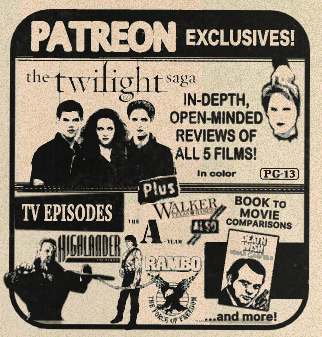
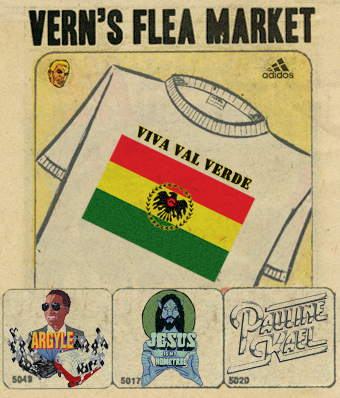
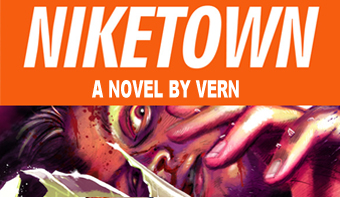
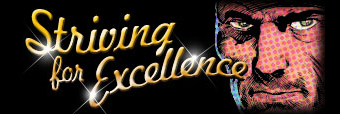
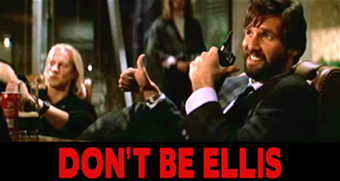
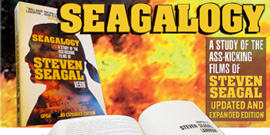
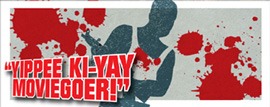








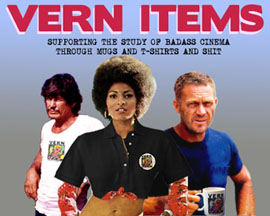
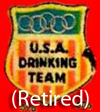
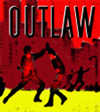







May 21st, 2020 at 12:18 pm
I kinda wish these trendsploitation movies were still a thing. 2017 could’ve really used a Fidget Spinner movie.